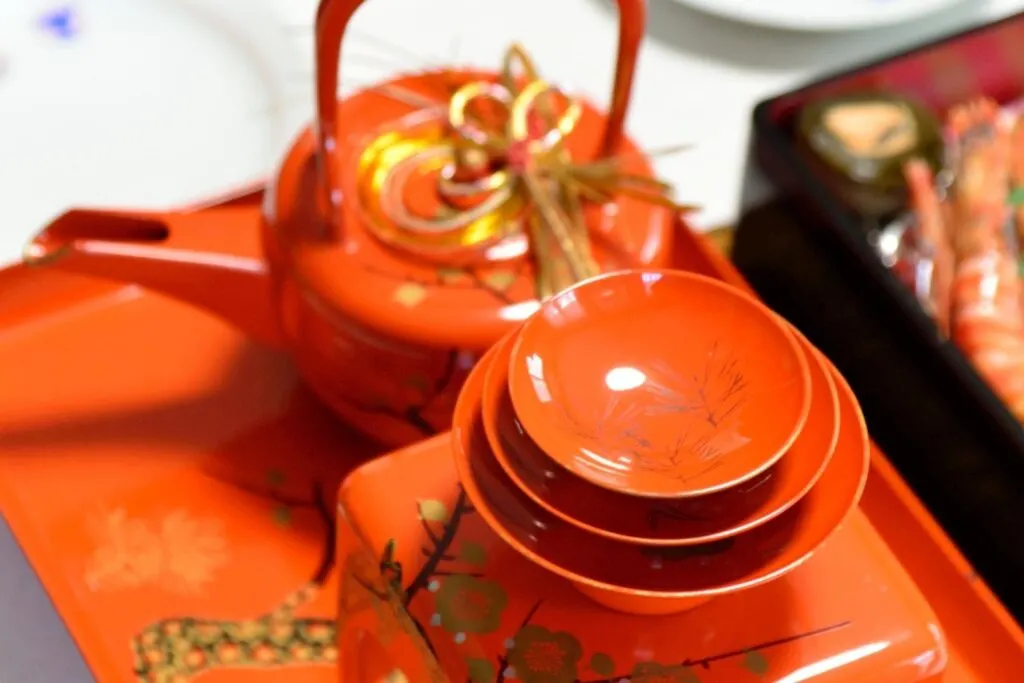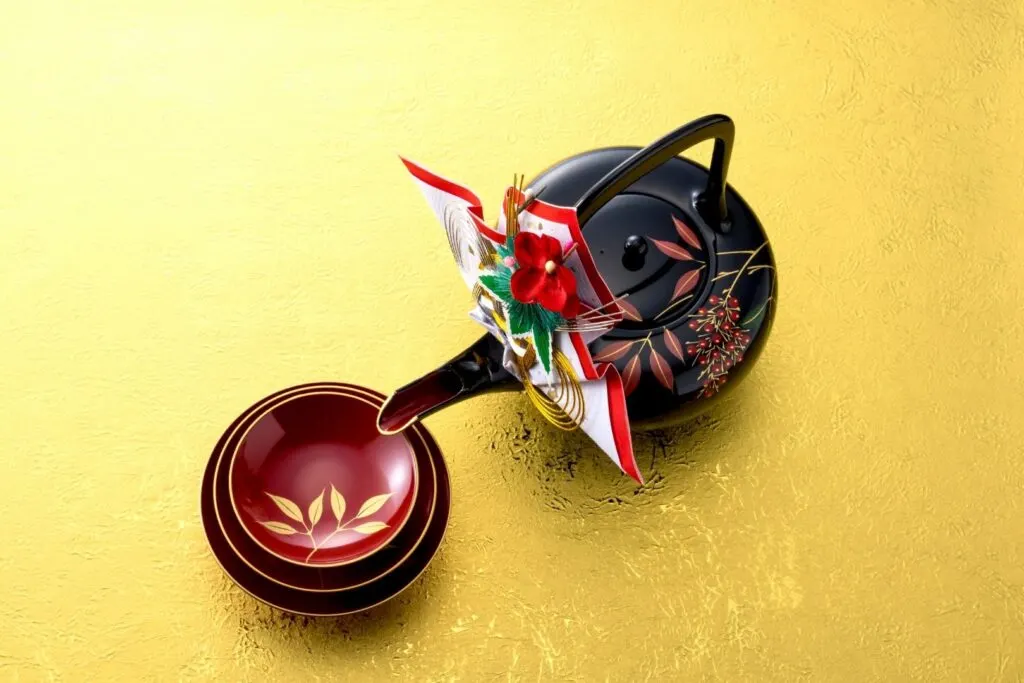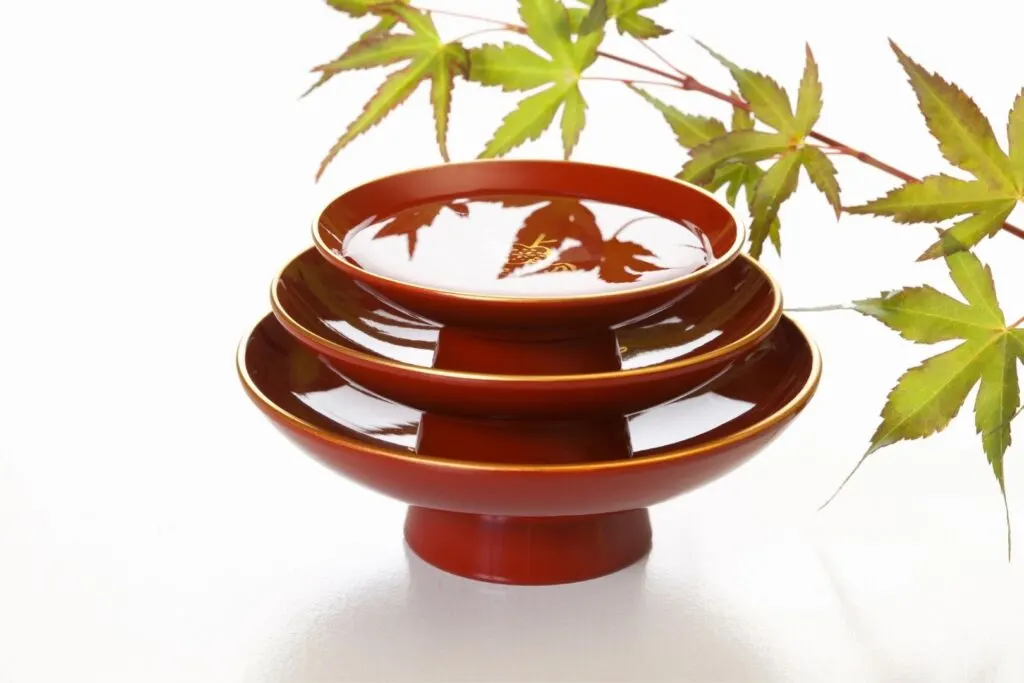The cuisine surrounding the Japanese New Year is full of auspicious meaning.
Through food and drink, it is believed that one can attract all manner of good fortune, from wealth and career prosperity, health and longevity, through to fertility and bountiful harvests.
One drink that has been part of this tradition for more than 1,000 years is a spicy alcoholic concoction known as toso.
In this article, we’ll discuss what it is, where this ritual came from, and how to make it for yourself.

What is Toso?
Toso, also called O-toso in honorific form, is a spiced sake made of medicinal herbs that is drunk as part of New Year traditions in Japan.
The kanji characters for toso are 屠蘇, the first meaning ‘evil spirits’ and the second ‘to slaughter’. Drinking toso therefore represents slaying evil and inviting in good juju, specifically in relation to good health.
This medicinal drink is said to ward off infectious illnesses like colds and flus, and keep one in good health for the coming year. In fact, according to old folklore, one person drinking toso will protect everyone in the family from illness, while if the whole family drinks it, it will protect the entire village.

Toso is traditionally drunk first thing on New Year’s Day. It is served in a set of three stackable sake cups known as sakazuki and poured from a special lacquer teapot called tosoki. Starting from the smallest cup, each member of the household will take a sip while facing east in order of youngest to oldest. This is to symbolically pass on the energy and vivacity of youth to the older generation.
This order, however, also had a very practical (and somewhat sinister) reasoning in the days of old. Apparently in the early days of toso consumption in China, where the practice originated, the youngest would drink first to ensure the sake wasn’t poisoned and to prevent the death of any of their revered elders. Nowadays in Japan, it is quite common for the head of the household to drink first.

History of Toso
Toso is believed to have been adopted by Japan during the Heian period (9th Century), when it was first recorded being drunk by Emperor Saga, Japan’s 52nd emperor.
For hundreds of years, toso remained a drink of the nobility, an integral part of Imperial court celebrations, where New Year cuisine known as osechi also originated. Much like the foods eaten as part of osechi, toso also trickled down to the community writ large during the Edo period (1603 – 1868).
The reason toso became a widespread New Year custom is really thanks to pharmacies, who around this time started handing out sachets of the medicinal blend to their customers as o-seibo (a year-end gift) to wish them good health in the year to come. This custom remained in practice to some degree until approximately thirty years ago.
How to Make O-toso
Toso is made using a blend of around 5-10 herbs and spices, called tososan (屠蘇散). The original mixture was based on an ancient Chinese medicinal recipe containing eight ingredients. Many of these continue to be used, but some that were considered too potent were replaced.
Tososan now typically includes cinnamon bark, rhubarb, dried ginger and sanshō (a Japanese pepper also used in 7-spice blend shichimi togarashi), along with lesser known wild roots and plants, such as okera (atractylodis rhizome) and kikyō (platycodi radix), bekkatsu (smilax china), bofu (Ledebouriellae radix) and uzu (aconite root).
Much easier than trying to acquire all the ingredients yourself, is to simply go to the pharmacy and buy a beautifully-packaged teabag of tososan. Given it was pharmacies that popularized toso and kept the tradition alive for centuries, rather than any kind of easy way out, it seems like a fitting nod to its past.
If you are located outside of Japan, you can try finding tososan at your local Japanese or Asian supermarket.
To prepare your o-toso, steep your teabag or spice blend in 300ml of sake or mirin for 7-8 hours. If you do this before bed on New Year’s Eve, it will be ready to drink by morning. Mirin, a rice wine vinegar commonly used in Japanese cooking, contains less alcohol and results in a slightly sweeter brew. If you go with mirin, be sure to buy hon-mirin, which doesn’t contain additives or extra sugar.
Unfortunately the drinking of toso is nowhere near as prevalent as it used to be, with many younger people now not being all too familiar with the practice, or deciding that it’s too much bother or old-fashioned. However, with renewed interested in wellness and traditional medicines, we may just see a revival of this traditional drink yet.
Have you tried o-toso? Would you?
Pin me for later

Jessica Korteman is a seasoned travel writer from Melbourne, Australia. She has spent a decade living, working and traveling in Japan, and specializes in Japanese culture, festivals and events, and travel destinations both on and off the beaten path throughout the country.
She is the Founder and Editor of Japanese Food Guide.
